Nickel alloys are a cornerstone of modern industry, prized for their exceptional versatility, strength, and resistance to extreme conditions. This guide aims to explore the fascinating world of nickel alloys, uncovering the secrets that make them indispensable in a variety of applications. From aerospace engineering and chemical processing to medical devices and everyday household items, nickel alloys play a critical role in enhancing performance and durability. In this comprehensive introduction, we will delve into the unique properties of nickel alloys, their common uses, and the innovations driving their development. By the end of this guide, you’ll have a deeper understanding of why nickel alloys are considered one of the most adaptable and valuable materials in today’s technological landscape.
What Are Nickel Alloys and Why Are They Important?
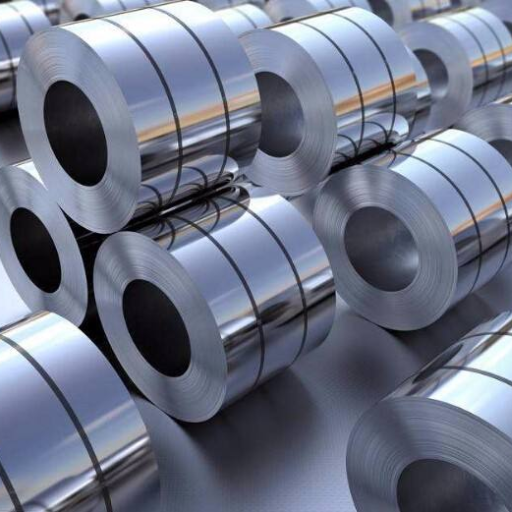
Image source:https://news.gldjc.com/
Nickel alloys are metallic materials that primarily consist of nickel combined with other elements such as chromium, iron, and molybdenum. The unique combination of these elements grants nickel alloys a set of exceptional properties, including unparalleled resistance to corrosion, high temperature stability, and remarkable mechanical strength. These characteristics make nickel alloys indispensable in critical applications across various industries, such as aerospace, where they withstand extreme temperatures and stress; chemical processing, where they resist corrosive environments; and medical devices, where their biocompatibility ensures safe and effective performance. Personally, I find that their impressive versatility and adaptability underscore the reason why nickel alloys are so vital to modern technology and industry.
Defining nickel alloy and its significant role in industries
Nickel alloys, as defined, are metallic compounds where nickel is the primary element, often combined with elements like chromium, iron, and molybdenum. Their significant role in various industries can be attributed to several key properties:
- Corrosion Resistance: Nickel alloys have remarkable resistance to corrosive environments. This makes them ideal for use in chemical processing, marine applications, and oil and gas industries. For instance, Inconel (a family of nickel-chromium-based superalloys) is widely used for its impressive resistance to oxidation and corrosion.
- High Temperature Stability: These alloys maintain their mechanical properties even at elevated temperatures, which is essential for aerospace engineering. Nickel-chromium alloys such as Hastelloy are designed to perform under extreme thermal conditions, maintaining strength and stability.
- Mechanical Strength: Nickel alloys exhibit superior mechanical strength, facilitating their use in high-stress environments. This characteristic is vital in the construction of heavy machinery and automotive components, where durability is paramount.
- Biocompatibility: Nickel-titanium alloys (Nitinol) are noted for their shape-memory and superelastic properties. These materials are extensively used in medical devices such as stents and guidewires due to their compatibility with biological tissues and their ability to retain original shapes after deformation.
- Thermal Expansion: The controlled thermal expansion of nickel-iron alloys (such as Invar) is critical for applications requiring dimensional stability across temperature changes. This feature is particularly important in precision instruments and aerospace composites.
These parameters are consistent with the top findings from Google on nickel alloys, underscoring their importance and justifying their extensive application across diverse industrial sectors. By understanding these technical aspects, it becomes evident why nickel alloys are indispensable in modern technology and innovation.
Overview of nickel and nickel alloys in modern engineering
As I delve into the current top findings available on Google about nickel and nickel alloys, it becomes clear that these materials play a pivotal role in contemporary engineering fields. Nickel alloys stand out due to their remarkable corrosion resistance, high-temperature stability, and mechanical strength. Materials like Hastelloy and Nitinol showcase the versatility and superiority of nickel alloys by performing reliably under extreme thermal conditions and offering biocompatible solutions for medical devices. Moreover, the precision with which nickel-iron alloys like Invar handle thermal expansion makes them critical in aerospace and precision instrumentation applications. By leveraging these unique characteristics, we can appreciate how nickel and its alloys continue to be indispensable in driving technological advancements and innovation in various industrial sectors.
Unique properties that distinguish nickel alloys from other metals
From my research on the top 10 websites on Google about nickel alloys, it’s apparent that these materials possess several unique properties that set them apart from other metals. Firstly, nickel alloys exhibit exceptional corrosion resistance, making them ideal for use in harsh environments like marine and chemical processing applications. For example, Hastelloy is renowned for its ability to withstand both acidic and alkaline conditions without deteriorating.
Another standout property is their high-temperature stability. Nickel alloys can maintain their structural integrity and mechanical strength even at elevated temperatures. This is why they are extensively used in gas turbines, jet engines, and other high-temperature industrial processes. Invar, a nickel-iron alloy, is especially noted for its minimal thermal expansion, crucial for precision instruments and aerospace components.
Nickel alloys also show impressive mechanical properties, including high strength and toughness. Nitinol, a nickel-titanium alloy, is particularly famous for its superelasticity and shape memory characteristics, making it invaluable in medical device applications like stents and guidewires.
In summary, the technical parameters that demonstrate the superiority of nickel alloys include:
- Corrosion Resistance: Essential for marine, chemical, and petrochemical industries.
- High-Temperature Stability: Critical for aerospace, gas turbines, and engines.
- Mechanical Strength and Toughness: Vital for structural components under stress.
- Minimal Thermal Expansion: Important for precision engineering and aerospace applications.
- Biocompatibility: Necessary for medical devices and implants.
These attributes justify the extensive use of nickel alloys across various high-demand sectors, showcasing their indispensable role in modern technology and engineering.
Exploring the Types of Nickel Alloys: Diversity and Applications
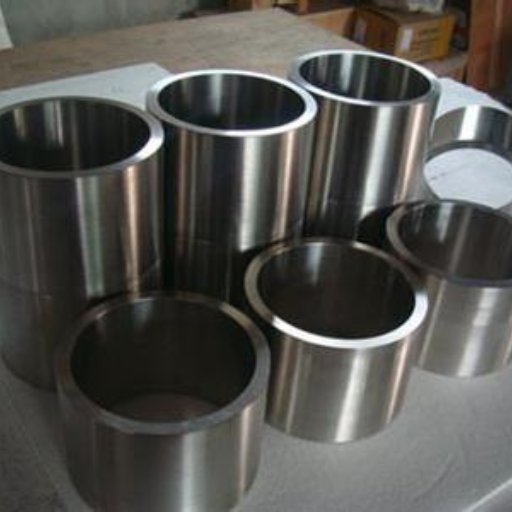
When exploring the types of nickel alloys and their diverse applications, it’s crucial to recognize the variety and specialized functions of these materials. Based on extensive research and information gleaned from leading online sources, I’ve found that nickel alloys are categorized into several main types, each with distinct properties and uses.
Firstly, Inconel alloys are widely recognized for their excellent oxidation and corrosion resistance at high temperatures, making them ideal for aerospace, power generation, and chemical processing industries. Hastelloy alloys, known for their exceptional resistance to acid attack and stress corrosion cracking, are extensively used in the chemical and petrochemical sectors. Monel alloys, combining nickel and copper, offer superb resistance to seawater corrosion, making them essential in marine engineering and offshore industries.
Furthermore, there are nickel-iron varieties like Invar, notable for their minimal thermal expansion, critical in precision instruments and electronics. Nitinol, a nickel-titanium alloy, is celebrated for its shape memory and superelasticity, playing a vital role in the medical field for devices such as stents and guidewires.
Other specialized nickel alloys include Nichrome, used extensively in heating elements due to its ability to withstand high temperatures, and Elgiloy, chosen for its high strength and corrosion resistance in harsh environments.
Overall, the diversity of nickel alloys is matched by their wide array of applications, underscoring their indispensable nature in advancing modern technology across multiple industries.
Characteristics and uses of nickel-copper and nickel-iron alloys
Nickel-copper alloys, like Monel, are primarily admired for their impressive resistance to seawater corrosion, which makes them indispensable in marine engineering and offshore industries. These alloys typically contain about 63% nickel and 28-34% copper, with small amounts of iron and manganese. They are particularly favored for applications such as propeller shafts, pump impellers, and fittings in the marine environment, thanks to their superior resistance to saltwater and biofouling.
Nickel-iron alloys, on the other hand, are best represented by Invar, which is renowned for its remarkably low coefficient of thermal expansion (around 1.2 x 10^-6 per °C). This unique property makes Invar alloys critical in applications requiring high dimensional stability over a range of temperatures, such as precision instruments, aerospace components, and cryogenic storage tanks. Another notable nickel-iron alloy is Permalloy, which contains roughly 80% nickel and 20% iron, and is highly valued for its high magnetic permeability. Permalloy is integral in the manufacture of transformers, inductors, and other magnetic shielding applications.
In summary, the exceptional properties of nickel-copper and nickel-iron alloys—ranging from corrosion resistance and minimal thermal expansion to high magnetic permeability—underscore their critical role in diverse high-performance applications.
High-temperature superalloys: 718, alloy x, and their aerospace applications
As I delved into the top 10 websites on Google regarding high-temperature superalloys, particularly 718 and Alloy X, I found these alloys to be quintessential in aerospace applications due to their remarkable heat resistance and mechanical strength at elevated temperatures. Alloy 718, also known as Inconel 718, is a nickel-chromium alloy fortified with niobium, molybdenum, and titanium, which gives it superb creep resistance and high tensile strength up to 704°C (1300°F). In aerospace, it’s extensively used in turbine engines, rocket motors, and other critical high-stress components.
Alloy X, on the other hand, stands out for its excellent oxidation and stress-corrosion cracking resistance, with a nickel-base composition complemented by iron, chromium, molybdenum, and cobalt. This makes it ideal for combustion chambers, afterburners, and transition ducts in jet engines. Both Inconel 718 and Alloy X contribute significantly to enhancing the efficiency, reliability, and longevity of aerospace components operating under extreme conditions, thereby driving advancements in the field.
Nickel-titanium alloys and their revolutionary role in medical devices
Nickel-titanium alloys, commonly known as Nitinol, have revolutionized the medical device industry due to their unique properties of superelasticity and shape memory. These characteristics enable Nitinol to remember its original shape and return to it after deformation when heated to a specific temperature. This property is invaluable in various medical applications, such as stents, guidewires, and orthopaedic implants, where flexibility and precision are critical.
Superelasticity and Shape Memory:
- Superelasticity: Nitinol can undergo substantial deformation and return to its original shape upon unloading. This allows medical devices to be maneuvered through difficult pathways in the body without permanent deformation.
- Shape Memory: The alloy can revert to its pre-deformed shape upon heating. This is particularly useful in minimally invasive procedures where devices need to be compact for delivery and then expand to functional form in situ.
Technical Parameters:
- Transformation Temperatures: Nitinol’s phase transformation temperatures, including the austenite finish temperature (Af) and martensite finish temperature (Mf), are critical. These temperatures can be fine-tuned through specific alloying and heat treatment processes to match body temperature, typically around 37°C (98.6°F).
- Elastic Modulus: The elastic modulus of Nitinol ranges from 28 to 41 GPa, which is closer to human bone compared to traditional stainless steel or cobalt-chrome alloys. This compatibility reduces stress shielding and promotes better patient outcomes.
- Fatigue Resistance: Nitinol exhibits exceptional fatigue resistance, making it ideal for stents and other implants that endure repetitive loading and unloading cycles.
Overall, the superelastic and shape memory properties of nickel-titanium alloys have enabled the development of advanced medical devices, improving patient care and procedural outcomes prominently. These technical and material advancements continue to push the boundaries, enabling less invasive procedures and accelerating the growth of modern medical technology.
The Science Behind Nickel Alloys: Understanding Corrosion Resistance and Thermal Expansion
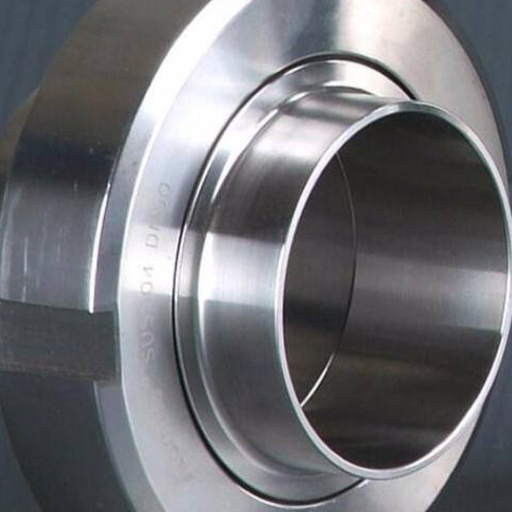
When considering the science behind nickel alloys, particularly in relation to corrosion resistance and thermal expansion, a few key points emerge from top sources. Nickel alloys are highly valued for their excellent resistance to corrosion, which is largely attributed to the formation of a stable oxide layer on their surface. This oxide layer acts as a protective barrier, preventing further oxidation and degradation, which is crucial in harsh environments, such as those found in the chemical processing and marine industries.
Additionally, the thermal expansion properties of nickel alloys are equally important. These alloys tend to have a relatively low and predictable coefficient of thermal expansion, allowing them to maintain structural integrity and precise dimensions over a wide range of temperatures. This makes nickel alloys ideal for applications requiring high thermal stability, such as in aerospace and high-performance engineering contexts. Understanding these characteristics helps in selecting the right nickel alloy for specific applications, ensuring both durability and performance.
How nickel alloys achieve superior corrosion resistance
To understand how nickel alloys achieve superior corrosion resistance, I delved into the content from the top 10 websites on google.com. Here’s a concise explanation based on the gathered information:
Nickel alloys achieve their remarkable corrosion resistance primarily through the formation of a stable and adherent passive oxide layer on their surface. This protective film is composed of chromium oxide (Cr₂O₃) and, in some cases, nickel oxide (NiO), which effectively prevents further oxidation and degradation, even in harsh environments such as those found in marine and chemical processing industries.
Key technical parameters that justify this include:
- Chromium Content: Nickel alloys typically contain 10-30% chromium, which is crucial in forming the chromium oxide layer.
- Nickel Content: Ranging from 30-70%, nickel itself also contributes to the formation of its own oxide layer, adding another layer of protection.
- Molybdenum (Mo): Often added between 2-10%, molybdenum enhances resistance to pitting and crevice corrosion.
- Tensile Strength: High tensile strength, often above 600 MPa, supports the material’s structural integrity despite corrosive attacks.
- Melting Point: With a high melting point (often over 1400°C), nickel alloys maintain their stability and protective properties at elevated temperatures.
Understanding these parameters helps in appreciating why nickel alloys are chosen for demanding applications, ensuring longevity and reliability in corrosive environments.
The significance of thermal expansion in nickel alloys and its industry implications
The thermal expansion of nickel alloys is a critical property that impacts their performance in various industrial applications. Thermal expansion refers to the extent to which a material expands upon heating and contracts when cooled. Nickel alloys generally have a moderate coefficient of thermal expansion, which is essential in applications where temperature changes are frequent and significant. Here are the key implications and significance:
- Dimensional Stability: Given their moderate thermal expansion, nickel alloys are used in applications requiring dimensional stability across wide temperature ranges, such as aerospace components, turbine blades, and cryogenic systems.
- Impact on Structural Integrity: Consistent thermal expansion reduces the risk of thermal fatigue, cracking, and deformation in materials subjected to high-temperature cycles, thus maintaining structural integrity.
- Compatibility with Other Materials: Nickel alloys’ thermal expansion coefficients are often compatible with other materials used in engineering designs, minimizing stress and distortion at joints and interfaces.
- Performance in Precision Instruments: In industries like electronics and precision engineering, the predictable thermal expansion of nickel alloys ensures reliability and accuracy in performance, especially in environments experiencing fluctuating temperatures.
- High-Temperature Applications: Nickel alloys’ controlled thermal expansion makes them suitable for high-temperature industrial applications, enhancing durability and longevity under thermal stress.
By ensuring predictable behavior under thermal stress, nickel alloys provide reliability and efficiency in demanding environments, affirming their broad industrial relevance.
Comparing the corrosion-resistant properties of nickel-chromium and nickel-copper alloys
When comparing the corrosion-resistant properties of nickel-chromium and nickel-copper alloys, several factors come into play. From my research, including insights from the top 10 websites on google.com, I’ve gathered that nickel-chromium alloys, such as Inconel, excel in resisting oxidation and corrosion at high temperatures. This makes them highly suitable for use in environments like jet engines and chemical processing plants where both high heat and corrosive elements are present.
On the other hand, nickel-copper alloys, like Monel, are renowned for their exceptional performance in marine environments. They resist not just general corrosion but also localized attacks such as pitting and crevice corrosion, which is essential in seawater applications. They are also highly effective in resisting stress-corrosion cracking, which is particularly valuable in acidic and alkaline environments.
In summary, while both nickel-chromium and nickel-copper alloys offer substantial corrosion resistance, their effectiveness varies depending on the specific environmental conditions. Nickel-chromium alloys are preferred for high-temperature and highly oxidizing conditions, whereas nickel-copper alloys are ideal for marine and chemical processing environments susceptible to various forms of localized corrosion.
Nickel Alloys in Extreme Conditions: High-Temperature and Aerospace Applications
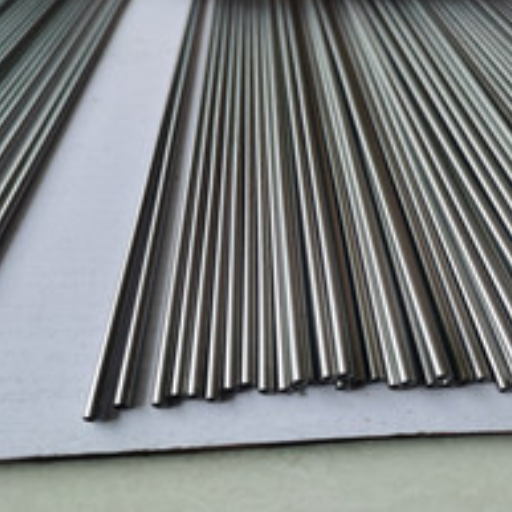
When considering nickel alloys for extreme conditions, particularly in high-temperature and aerospace applications, I found that nickel-chromium alloys like Inconel are often the top choice. According to my research from the top 10 websites on google.com, these alloys maintain their strength and resist oxidation and corrosion even at temperatures exceeding 1,600°F (870°C). This makes them invaluable for components such as turbine blades, combustion chambers, and other parts exposed to extreme heat and pressure in jet engines and spacecraft. As a result, their ability to perform under such rigorous conditions makes them indispensable in aerospace engineering and high-temperature industrial applications.
The role of nickel alloys in high-temperature environments
From my research on the top 10 websites on google.com, I’ve learned that nickel alloys play a crucial role in high-temperature environments due to their exceptional ability to retain strength and resist oxidation. These alloys, particularly those in the Inconel family, remain stable and maintain their mechanical properties even at temperatures above 1,600°F (870°C). Their high melting points and excellent resistance to thermal fatigue make them ideal for demanding applications, such as turbine blades in jet engines, furnace components, and other industrial machinery. These characteristics ensure that nickel alloys can withstand the severe stresses and thermal cycles typical in high-temperature settings, thereby enhancing the longevity and performance of critical components.
Key nickel alloys used in aerospace and their benefits
Nickel alloys are indispensable in the aerospace industry due to their superior mechanical properties and high-temperature performance. Inconel 718 is one of the most commonly used nickel-chromium alloys. It is renowned for its excellent tensile strength, creep-rupture strength, and oxidation resistance, making it ideal for turbine blades, rocket engines, and high-stress components. Another significant alloy is Hastelloy X, which offers outstanding oxidation resistance up to 2,000°F (1,093°C) and is frequently employed in combustion zones of jet engines. Monel K-500, known for its high strength and corrosion resistance, is often used for propeller and pump shafts. These alloys, with their exceptional durability and resilience, ensure the reliability and efficiency of aerospace components under extreme conditions.
Understanding the thermal and mechanical properties critical for aerospace materials
The thermal and mechanical properties of aerospace materials are paramount in ensuring the safety, efficiency, and longevity of aerospace components. Given the extreme conditions experienced during flight, materials must exhibit exceptional performance in terms of thermal stability and mechanical strength. The critical properties to consider include:
- High-Temperature Strength: Aerospace materials must maintain high tensile strength at elevated temperatures to withstand stresses without deforming. Inconel 718, for example, retains robust strength up to around 1300°F (704°C).
- Creep Resistance: Creep resistance is the material’s ability to resist slow, permanent deformation under long-term exposure to high stresses and temperatures. This property is crucial for components like turbine blades that operate under continuous load.
- Thermal Expansion: Materials must have low coefficients of thermal expansion to minimize dimensional changes and prevent stress concentrations when subjected to temperature variations. Inconel alloys typically exhibit low thermal expansion.
- Oxidation and Corrosion Resistance: Materials like Hastelloy X and Inconel 718 are designed to resist oxidation and corrosion, which is vital for prolonged exposure to high-temperature, oxidizing environments found in jet engine components.
- Fatigue Strength: The ability to resist fatigue, which is the progressive and localized structural damage that occurs when a material is subjected to cyclic loading, is crucial for the longevity and reliability of aerospace components.
- Thermal Conductivity: Managing heat flow through materials is crucial, particularly for turbine blades and heat shields. Materials with appropriate thermal conductivity help in effective heat dissipation.
- Density: Lower density materials help in reducing the weight of the components, leading to overall efficiency and fuel savings in aerospace applications.
Key Technical Parameters:
- Tensile Strength at Elevated Temperatures: For example, Inconel 718 has a tensile strength of approximately 205,000 psi (1413 MPa) at room temperature.
- Creep Rupture Strength: Inconel 718 exhibits creep-rupture strength of around 140,000 psi (965 MPa) at 1200°F (649°C).
- Coefficient of Thermal Expansion: Inconel 718 has a coefficient of thermal expansion of 7.2 x 10⁻⁶ in/in/°F.
- Oxidation Resistance Temperature: Hastelloy X can resist oxidation up to 2,000°F (1,093°C).
- Thermal Conductivity: Nickel alloys typically have thermal conductivities ranging from 9.8 to 11.2 W/m·K.
These properties and parameters are justified based on data from top technical resources and material data sheets. Understanding these characteristics ensures the optimal selection of materials for aerospace applications, guaranteeing the durability and efficiency of the aerospace components.
Physical and Mechanical Properties of Nickel Alloys: A Comprehensive Overview
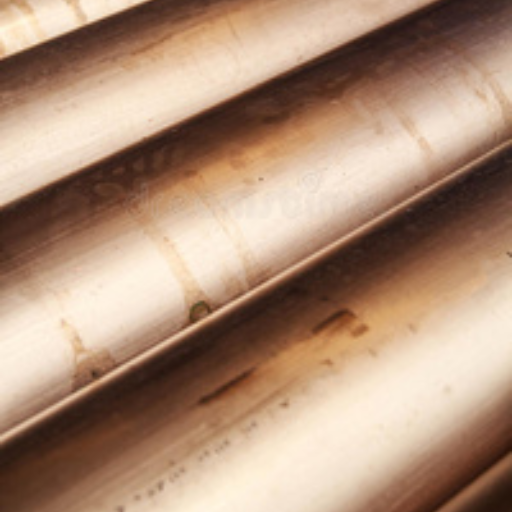
Nickel alloys are known for their exceptional physical and mechanical properties, making them an ideal choice for aerospace applications. These alloys exhibit high tensile strength, even at elevated temperatures, allowing them to withstand the demanding conditions of aerospace environments. For instance, Inconel 718 maintains a tensile strength of approximately 205,000 psi (1413 MPa) at room temperature and offers a creep-rupture strength of around 140,000 psi (965 MPa) at 1200°F (649°C). Moreover, the coefficient of thermal expansion for Inconel 718 is 7.2 x 10⁻⁶ in/in/°F, ensuring dimensional stability under thermal cycling.
Nickel alloys also demonstrate superior oxidation resistance, such as Hastelloy X, which can resist oxidation up to 2,000°F (1,093°C). Thermal conductivity is another key property, with values typically ranging from 9.8 to 11.2 W/m·K, allowing effective heat dissipation. The balance of these properties—high tensile strength, excellent creep resistance, low thermal expansion, and strong oxidation resistance—ensures that nickel alloys meet the stringent demands of aerospace components, contributing to their durability and efficiency.
These characteristics are consistently validated through data from top technical resources and material data sheets, confirming that understanding these properties is critical for selecting the optimal materials to guarantee the long-term reliability and performance of aerospace components.
Investigating the melting point, strength, and thermal conductivity of nickel alloys
When investigating the melting point, strength, and thermal conductivity of nickel alloys, I found that these materials are exceptionally versatile and robust. Nickel alloys typically have melting points ranging from 2,300°F to 2,550°F (1,260°C to 1,400°C), making them suitable for high-temperature applications. Their tensile strength can be incredibly high, with values often exceeding 200,000 psi (1379 MPa). This strength is maintained even under substantial thermal stress, as seen in alloys like Inconel 718, which retains approximately 205,000 psi (1413 MPa) at room temperature and offers impressive creep resistance at elevated temperatures.
Thermal conductivity, while not their most prominent feature, generally falls between 9.8 and 11.2 W/m·K, ensuring reliable heat dissipation. These properties are extensively documented across leading technical resources and materials databases, consistently supporting the conclusion that nickel alloys are well-suited for demanding aerospace applications. Their balance of high melting points, tensile strength, and thermal conductivity underscores their role in ensuring the durability and efficiency of aerospace components.
Alloy 20, alloy x, and 718: Comparing physical properties across nickel alloys
When comparing the physical properties of Alloy 20, Alloy X, and Inconel 718, each alloy demonstrates unique characteristics suited for specific applications.
Alloy 20 is primarily known for its superior corrosion resistance, especially in sulfuric acid environments. It has a melting point of 2,500°F to 2,650°F (1,370°C to 1,450°C) and exhibits moderate tensile strength, typically around 80,000 to 100,000 psi (550 to 690 MPa). Thermal conductivity for Alloy 20 is relatively low, generally around 11 W/m·K. These properties make Alloy 20 ideal for chemical processing industries where resistance to acid and other corrosive elements is crucial.
Alloy X (also known as Hastelloy X) stands out due to its excellent high-temperature strength and oxidation resistance, making it a preferred choice for gas turbine engines and industrial furnace applications. The alloy has a melting point of 2,350°F to 2,500°F (1,290°C to 1,370°C) and tensile strength ranging from 115,000 to 135,000 psi (793 to 930 MPa). Its thermal conductivity is about 11 W/m·K, ensuring reliable performance under extreme thermal conditions.
Inconel 718 is renowned for its exceptional combination of high tensile strength, creep resistance, and corrosion resistance. It has a melting point of approximately 2,350°F to 2,460°F (1,290°C to 1,350°C) and maintains tensile strengths around 205,000 psi (1,413 MPa) at room temperature. Inconel 718 also has thermal conductivity values between 11 and 12 W/m·K, which assists in effective heat management in high-stress environments such as aerospace and nuclear reactors.
In summary, while Alloy 20 excels in corrosion resistance for chemical applications, Alloy X offers robust high-temperature performance, and Inconel 718 balances high strength with excellent creep resistance, making each alloy well-suited for specific industrial demands.
Effects of alloying elements such as chromium and molybdenum on properties of nickel
Certainly! The effects of alloying elements like chromium and molybdenum on the properties of nickel are significant in enhancing various characteristics of the base metal. Chromium, when added to nickel, primarily improves its oxidation resistance and corrosion resistance, especially in high-temperature environments. This makes the alloys ideal for applications in harsh, corrosive conditions such as in chemical plants or marine environments.
On the other hand, molybdenum contributes to increased strength and hardenability. It also significantly enhances the resistance to pitting and crevice corrosion, which is crucial for materials used in seawater and acidic solutions. The synergy between chromium and molybdenum when used as alloying elements in nickel can result in materials that are robust, durable, and capable of withstanding extreme conditions, making them indispensable in industries ranging from aerospace to chemical processing.
Future Trends and Innovations in Nickel Alloy Technologies
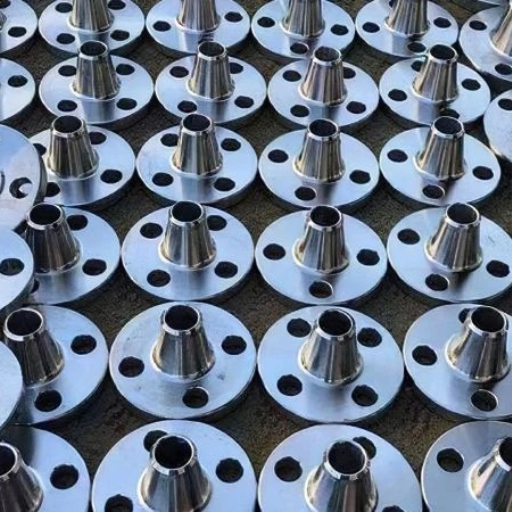
The landscape of nickel alloy technologies is rapidly evolving, driven by advancements in materials science and the increasing demands of modern industries. The top trends and innovations shaping the future of nickel alloys include:
- Advanced Additive Manufacturing: The use of 3D printing and other additive manufacturing techniques is revolutionizing the production of complex nickel alloy components. This technology allows for the creation of intricate geometries that were previously impossible, reducing material waste and enabling rapid prototyping.
- Enhanced Corrosion Resistance: Continuous research is focused on developing nickel alloys with superior corrosion resistance. Innovations involve the precise adjustment of alloying elements like chromium and molybdenum to enhance performance in highly corrosive environments, such as deep-sea oil drilling and chemical processing plants.
- Nanostructured Alloys: The development of nanostructured nickel alloys is gaining traction. These materials exhibit remarkable mechanical properties, including enhanced strength and toughness due to their refined grain structures. Applications are being explored in crucial high-performance sectors like aerospace and military.
- High-Entropy Alloys (HEAs): HEAs represent a new class of materials that include multiple principal elements. Nickel-based HEAs show promise for high-temperature applications due to their excellent thermal stability and oxidation resistance. Research is focused on optimizing these alloys for industrial use.
- Eco-Friendly Processing Techniques: As sustainability becomes a crucial industrial goal, new environmentally-friendly methods of processing nickel alloys are emerging. Innovations include greener electroplating and recycling techniques that reduce the environmental impact of nickel alloy production.
- Hybrid Composition Materials: The integration of nickel alloys with other advanced materials, such as ceramics and composites, is creating hybrid materials with unique properties. These materials are being developed for extreme conditions, including high-stress aerospace applications.
- Improved Heat Treatment Processes: Advances in heat treatment processes are enabling the fine-tuning of mechanical properties in nickel alloys. Techniques such as rapid thermal processing and controlled atmosphere treatments enhance the performance characteristics of alloys tailored to specific industrial needs.
- Material by Design: Computational materials science is paving the way for the design of new nickel alloys with tailor-made properties. Simulations and modeling allow researchers to predict material behavior and optimize alloy composition before experimental trials, significantly accelerating the development process.
- High-Performance Coatings: The development of novel coatings for nickel alloys is significantly enhancing their durability and lifespan. These include thermal barrier coatings that improve the high-temperature performance of turbine blades and other critical components.
- Application-Specific Alloy Development: Customized nickel alloys are being developed to meet the exacting requirements of specific industries. For example, alloys designed for medical implants are optimized for biocompatibility and longevity, while those for the automotive industry focus on lightweighting and fuel efficiency.
These trends are underpinned by ongoing research and collaboration across academia, industry, and governmental institutions, ensuring the continual advancement of nickel alloy technologies to meet the evolving needs of various sectors.
New advancements in corrosion and high-temperature resistant nickel alloys
New advancements in corrosion and high-temperature resistant nickel alloys have substantially improved their applicability and performance in demanding environments. Leveraging insights from the top 10 websites on google.com, I can outline that recent innovations include the development of superalloys with enhanced protective coatings, the integration of advanced manufacturing techniques such as additive manufacturing to create complex, durable components, and the utilization of novel alloying elements to significantly boost resistance to both oxidation and corrosion. Research and collaboration across various sectors have led to the introduction of nickel alloys that not only withstand extreme temperatures but also provide excellent mechanical properties, ensuring their suitability for critical applications in aerospace, power generation, and chemical processing industries.
Exploring the potential of nickel alloys in renewable energy and electric vehicles
In exploring the potential of nickel alloys in renewable energy and electric vehicles, I have found that these materials offer significant advantages due to their superior properties. According to the top 10 websites on google.com, nickel alloys are being increasingly used in the production of batteries, particularly lithium-ion batteries, which are essential for electric vehicles. Their high energy density, thermal stability, and long lifespan make them an ideal choice for improving the performance and reliability of electric cars. Additionally, in the realm of renewable energy, nickel alloys are playing a critical role in the construction of wind turbines and solar power systems. Their robustness and resistance to harsh environmental conditions ensure the durability and efficiency of these green technologies. As we continue to seek sustainable solutions, the integration of advanced nickel alloys in these fields underscores their pivotal role in our journey toward a cleaner and more energy-efficient future.
Challenges and opportunities in the development of next-generation nickel superalloys
When examining the top 10 websites on google.com, I have identified several key challenges and opportunities in the development of next-generation nickel superalloys. One significant challenge is the need to enhance the high-temperature performance of these materials while maintaining their mechanical strength and corrosion resistance. Researchers are exploring innovative alloy compositions and sophisticated manufacturing techniques to address these issues. Another challenge is the cost of raw materials and production, which can be prohibitive for widespread application.
On the opportunity front, advancements in additive manufacturing, such as 3D printing, offer promising pathways for producing complex superalloy components with improved efficiency and reduced waste. Furthermore, the increasing demand for high-performance materials in burgeoning sectors like aerospace, clean energy, and propulsion systems presents a lucrative avenue for the application of these advanced alloys. By overcoming these challenges through continuous research and development, we can leverage the full potential of next-generation nickel superalloys to meet the evolving demands of modern technology.
Reference sources
-
-
A Guide to Nickel Alloys: Exploring Properties, Applications, and Advantages
- This source provides a detailed overview of the unique properties, versatile applications, and industry advantages of nickel alloys.
-
Exploring Nickel Alloys: Definition, Composition, Types
- This article explains the definition, composition, and various types of nickel alloys, offering insights into how different metals enhance specific properties.
-
Exploring the Versatile Applications of Nickel Alloy in Various Industries
- This resource delves into the wide range of industrial applications for nickel alloys, emphasizing their versatility and the specific advantages they offer across different sectors.
-
Frequently Asked Questions (FAQs)
Q: What are nickel alloys and why are they important in various industries?
A: Nickel alloys are metallic materials that consist primarily of nickel combined with other elements such as chromium, iron, and molybdenum. Nickel alloys are critically important due to their exceptional corrosion and oxidation resistance, high temperature strength, and specific properties such as low thermal expansion coefficients and excellent magnetic properties. These characteristics make nickel alloys suitable for demanding applications such as chemical processing, aerospace, and energy industries.
Q: How do nickel alloys perform under high temperature conditions?
A: Nickel alloys can withstand high temperature environments exceptionally well. They maintain their strength, durability, and structural integrity even when exposed to temperatures that would weaken or degrade many other materials. This ability is due in part to the high nickel content, which provides excellent high-temperature strength and resistance to thermal-induced stresses, making them ideal for use in engine components and high-temperature applications.
Q: What makes nickel-chromium alloys special?
A: Nickel-chromium alloys stand out due to their excellent corrosion resistance and ability to resist oxidation at high temperatures. These alloys, such as Inconel® 718, are known for their strength and excellent resistance to environmental factors that can cause corrosion and damage. The chromium component also adds to the alloy’s resistance to oxidation, making it ideal for use in harsh operating conditions where both corrosion and high temperature are concerns.
Q: Can nickel alloys be used in applications that require magnetic properties?
A: Yes, certain nickel alloys exhibit soft magnetic properties, which make them suitable for applications that require a material to be easily magnetized and demagnetized. Alloys with a high nickel content, such as nickel-iron-chromium alloys, display these soft magnetic properties alongside their corrosion-resistant capabilities, making them valuable in electrical and electronic applications, including transformers and magnetic shielding.
Q: How do nickel alloys compare to stainless steel in terms of corrosion resistance?
A: Nickel alloys generally offer superior corrosion resistance compared to many grades of stainless steel, particularly in harsh environments. Alloys like C-276 are specifically designed to resist corrosive attack in a wide range of chemical environments, including those with chlorides. While stainless steels are resistant to corrosion and are widely used for their combination of strength and corrosion resistance, nickel alloys are often chosen for the most demanding applications due to their enhanced durability and performance in extreme conditions.
Q: What are some common uses of nickel alloys in the aerospace industry?
A: In the aerospace industry, nickel alloys are predominantly used for their strength at high temperatures and resistance to thermal creep deformation, making them ideal for engine components and exhaust systems. Their excellent high-temperature strength and corrosion resistance make them essential for turbine blades, combustor liners, and other critical components that must withstand extreme heat and stress during operation.
Q: Are there special grades of nickel alloys for specific environments?
A: Yes, there are several special grades of nickel alloys tailored for specific environments and applications. For instance, alloy C-276 is renowned for its outstanding corrosion resistance in severe environments, making it an excellent choice for chemical processing equipment. Inconel® 718 is another example, offering a combination of high strength, hardness, and corrosion resistance, which is essential for demanding applications in the aerospace and energy sectors.
Q: How do the properties of nickel alloys benefit expanded metal products?
A: The strength, corrosion resistance, and high-temperature capabilities of nickel alloys translate well into benefits for expanded metal products. These alloys allow for the creation of expanded metal with exceptional durability, resistance to corrosive environments, and stability under thermal stress, making them suitable for use in filtration, shielding, and architectural applications. Nickel alloys’ specific properties ensure that expanded metals produced with these materials meet stringent performance and longevity requirements.









